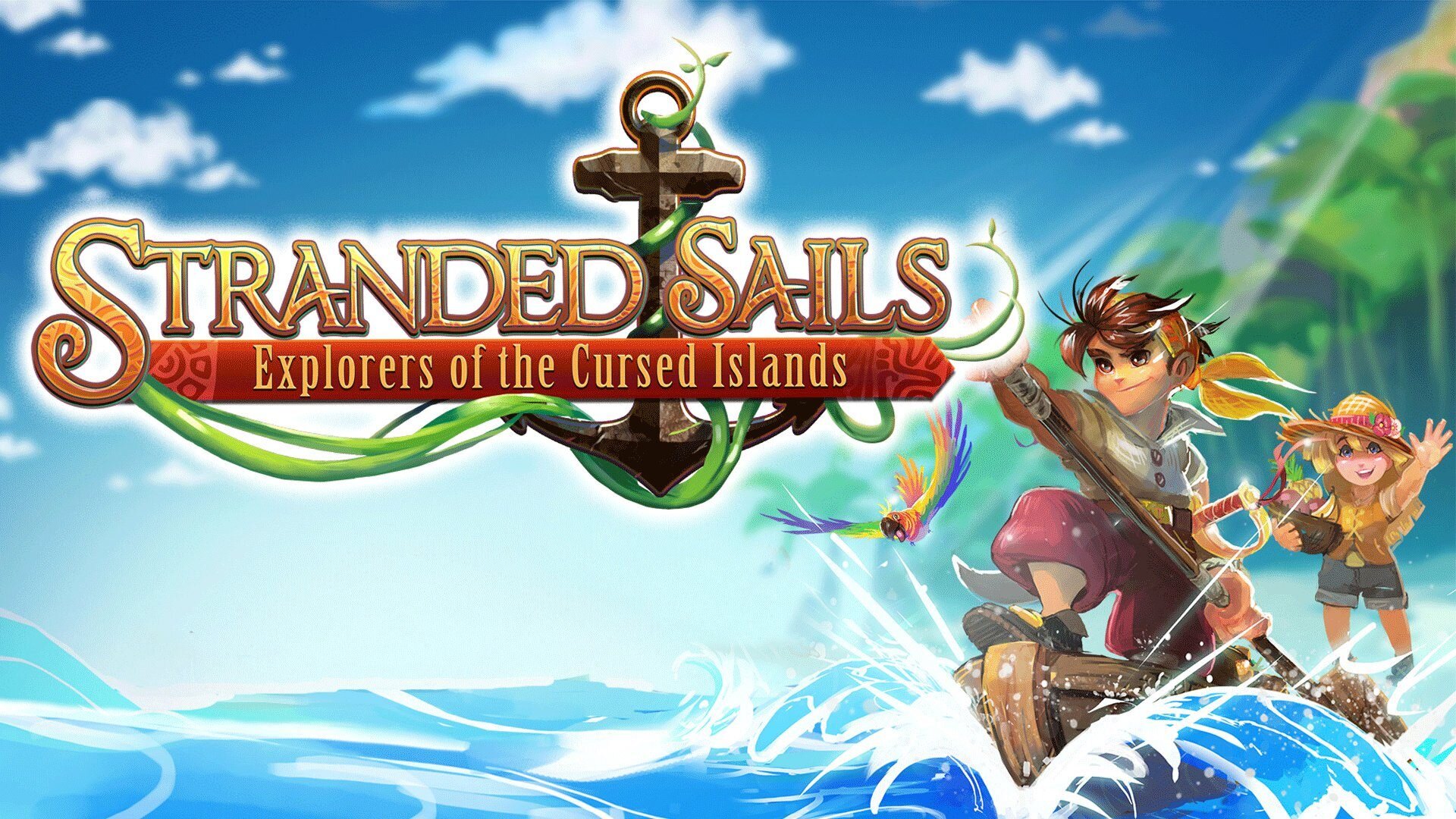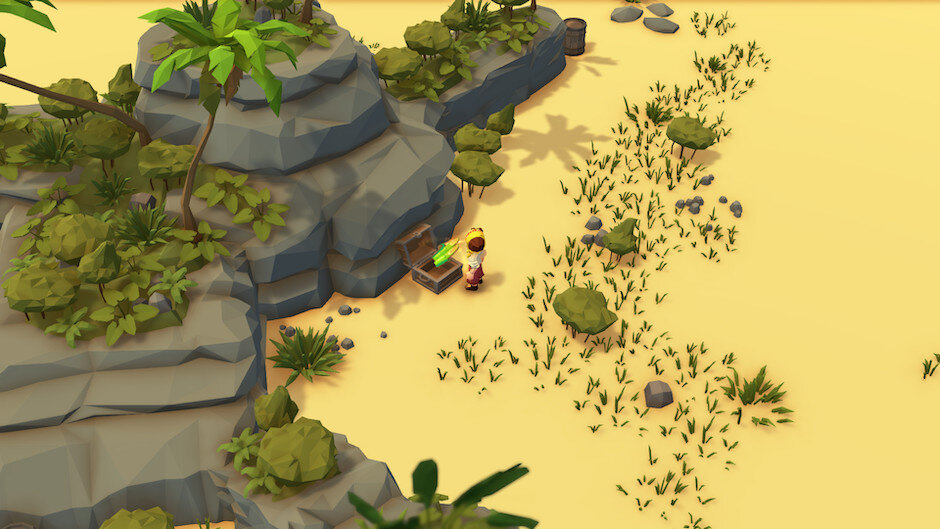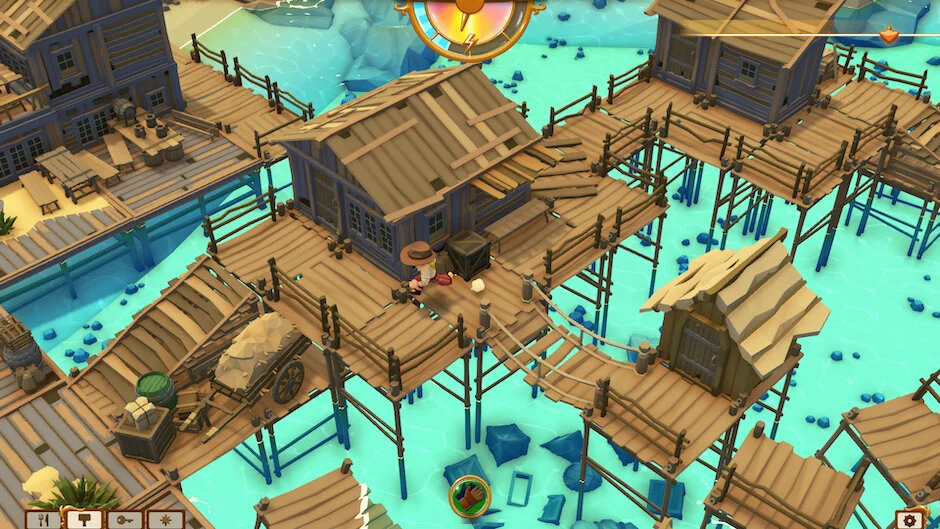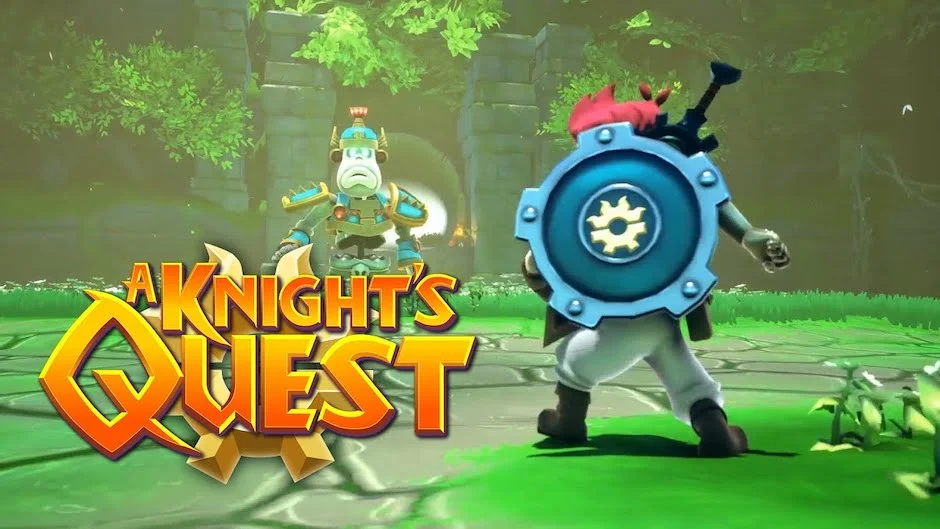Nintendo Switch code provided by Lemonbomb Entertainment
Cursed islands are remarkably common in the world, apparently. They have been luring in and shipwrecking sailors in many seafaring adventures throughout entertainment history. Sometimes, luck (or misfortune, really) will have it that a colossal ape and murderous natives are thrown into the mix as well. It’s all downhill for the sailor that gets tossed by waves onto the sandbars of uncertainty. That’s not the case, though, in Stranded Sails: Explorers of the Cursed Islands, the latest project from Lemonbomb Entertainment. For the marooned crew and the plucky protagonist, things seem to improve from the vapid life in the city. How, you might ask? Dubious stew. If you’re wondering what it would be like if a farming simulator and an open-world exploration game merged into one, then Stranded Sails is a close approximation.
STORY
The adventure begins with a quick introduction to the crew and your father, the captain of the ship, before sailing away toward a bright horizon rich with possibility. That soon changes once a powerful storm crashes your vessel, and you awake in the sand naked and afraid. Just kidding. You’re not naked. Alone, but fully clothed. The next step is acclimating to the dire situation and looking for survivors.
The first few hours of play will involve the reunion of the scattered crew members and the requisite actions that will ensure survival in a remote setting. Primarily, setting up camp and focusing on the essentials. The only problem? Your father is gravely injured. He cannot contribute. And the rest of the ship’s passengers are still adjusting to the sudden and deleterious halt to their journey. Which leaves the fate of crew in your (just now becoming) capable hands. With the burden of leadership on your shoulders, two things become certain: everyone needs shelter and sustenance. That will require resources to be gathered from around the island. Also, time to plant some crops.
Farming and exploring will demand all of your time and energy. And successful forays into agriculture and adventure will grant you the food, timber, and supplies to build shacks for the crew and to sustain them with hearty meals.
Once you’ve established a suitable encampment for all of the men and women you rescued, it’s time to explore in earnest. The narrative finally shifts focus at this point toward the accursed archipelago on which you are stranded. Strewn across the islands are tattered remnants of history on scrolls or tablets, but until you can build a bridge and explore the pyramid nearby your shantytown, it’s all about survival.
The pyramid—and the ability to build bridges while surveying the other islands—is the catalyst for the quest explaining the mysterious power of the shrouded seas that encircle the archipelago. It’s when the “Cursed Islands” bit of the title starts to make sense. I won’t go into too much detail, but it’s when the story really gets its sea legs.
GAMEPLAY
Stranded Sails revolves around the management of physical energy. Every action taxes your stamina. How much or how little depends upon the efficiency of your movements. Tilling the land, planting seeds, watering the soil, and gathering crops ready for harvest will all exhaust you. Fishing on the shore, chopping down trees, and even running faster than a slow jog will all expend the limited amount of energy that you have. Which means you have to move with purpose and act only in ways that further your progress.
There are two ways to restore energy: sleeping in bed and eating food. When your farm isn’t fully developed, sleeping will be the primary method by which you regain stamina, but eventually, you’ll be able to eat from your cache of fruits, vegetables, and seafood. A limit on the capacity of prepared food that you can carry with you still means you’ll have to return to the camp for rejuvenation. That barrier to exploration ultimately hamstrings the game. It draws out the process of exploring the islands. Rather than smaller areas that take longer to explore, Lemonbomb needed to develop a larger world. There were plenty of times when just as I entered an interesting location that I wanted to check out, I was forced to return to camp to cook more food and tend to the crops.
It’s the aspect of the game where the farming simulator and the open-world adventure were tugging in opposite directions. They didn’t complement each other. Since they didn’t play nice together, let’s examine them independently.
Farming first. You can upgrade your plot of land as the game progresses, but it still involves a simple process. Dig holes in the ground. Plant seeds that are scattered across the islands. Water the crops. Wait some time. Water some more. Harvest. It’s a relaxing cycle, and you’ll likely shift from a hastily assembled assortment of foods into an organized field of diverse fruits and vegetables. It’s easy and your diligent efforts will be rewarded with a bountiful harvest. Not to mention you can use those crops to make a bubbly stew that your crew will love. Just make sure you put in the right ingredients.
An offshoot of farming is cooking. Where Stranded Sails stumbles again. To improve your culinary skills, you have to discover recipes, which is simple enough when there are two ingredients. You randomly select ingredients until you magically know how to make corn-stuffed tomatoes. Once you get to three and four ingredients, though, it becomes an excruciating process. Because it’s not just the right ingredients. It’s the right spot as well. This means you’ll end up cycling through all of the crops in your inventory and dropping them into the slots in the hopes that you’ve put the right food in the right spot. It’s tedious.
The open world, on the other hand, is inviting. The abandoned villages and outposts of past marooned crews litter the islands. Interesting scraps of history and mythology tell tales of champions and tests of character. Rowing around in your small boat feels muscular and real. But there’s not enough to sustain a player’s interest beyond the requirements of a quest. It feels larger than it is with one leg always chained to the sailors’ camp because of your dwindling stamina.
So Stranded Sails does two things well, but nothing brilliantly.
VISUALS
The top-down view of the attractive world looks nice in handheld mode on the Nintendo Switch. It won’t win any awards, but the game vivifies the rich farming simulation and bestows individuality upon the quirky crew and adventurous young captain-to-be. It looks like a long-lost sibling to The Wind Waker. I appreciated the allure of the archipelago, and the art style was pleasant.
REPLAYABILITY
With not enough RPG elements in the exploratory part of the game and a farming simulator that is tied to the narrative, I probably won’t come back to Stranded Sails to experience either part of it in isolation. They’re tied to each other, for better or worse. And that dependency means there’s not much reason to overstay your welcome in the game.
WHAT IT COULD HAVE DONE BETTER
The mashup of genres was an interesting premise, but I’m not sure Lemonbomb Entertainment was able to pull it off. I was left wanting more with regards to both the farming simulation and the open world. The relaxing world of tending to one’s crops was disrupted by the ceaseless questing, and the search for answers and mystery was equally stymied by the need to return to the homestead.
VERDICT
Stranded Sails: Explorers of the Cursed Islands couldn’t get out of its own way, unfortunately. Yes, there’s an RPG and a farming simulator in the same game. But each aspect of the game suffered from the inclusion of the other. The overall experience was superficial as the disparate elements of the game prevented each from attaining a much-needed depth.


























